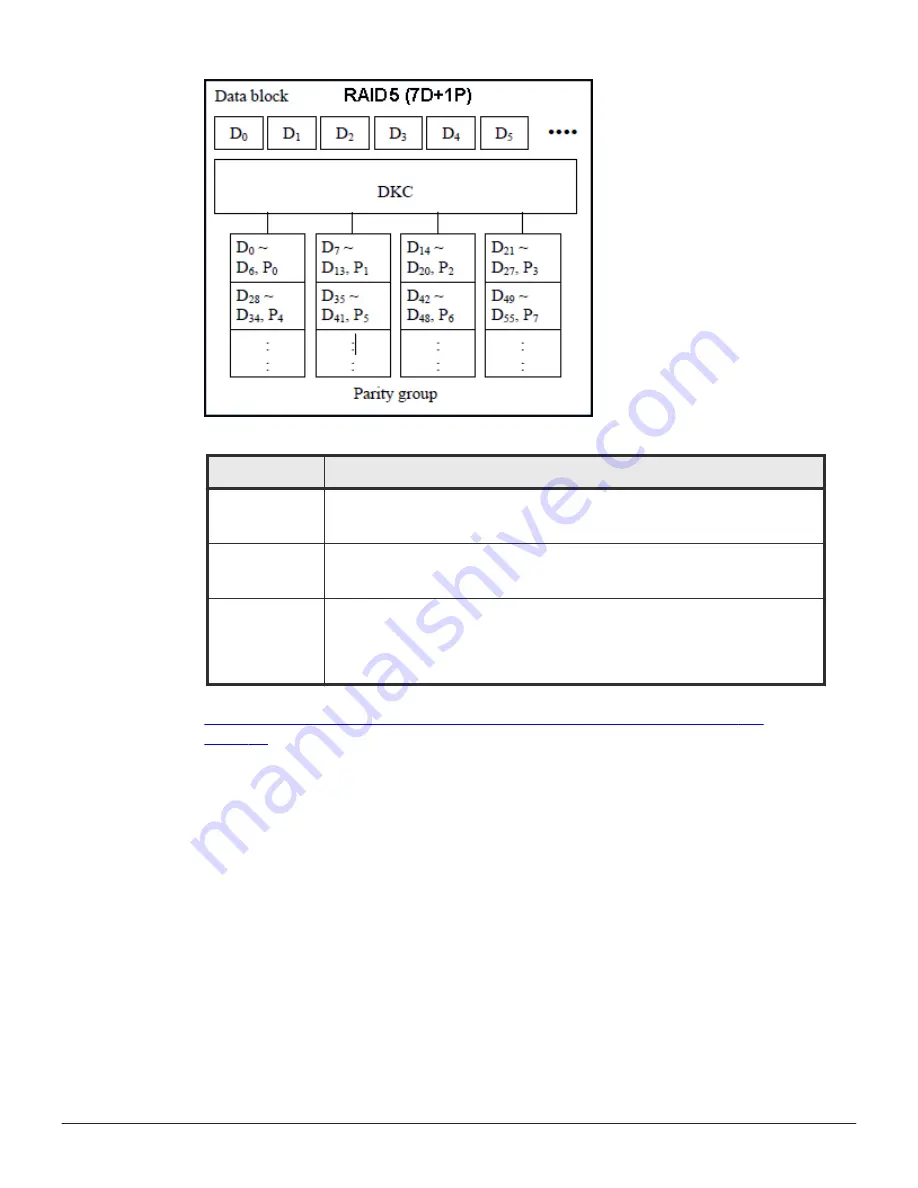
Item
Description
Description
In the case of RAID 5 (7D+1P), two or four parity groups (eight drives) are
concatenated, and the data is distributed and arranged in 16 drives or 32
drives.
Advantage
If a RAID 5 (3D+1P) parity group becomes a performance bottleneck, you might
achieve performance improvement through the added drives in a RAID5 (7D
+1P) configuration.
Disadvantage
The impact when two drives are blocked is significant because twice or four
times the numbers of LDEVs are arranged in the parity group when compared
with RAID 5 (3D+1P). However, the chance that the read of the single block in
the parity group cannot be performed due to failure is the same as that of RAID
5 (3D+1P).
Figure 11 Sample RAID 5 3D + 1P Layout (Data Plus Parity Stripe) on
page 58
shows RAID 5 data stripes mapped across four physical drives.
Data and parity are striped across each drive in the array group (hence the
term “parity group”). The logical devices (LDEVs) are dispersed evenly in the
array group, so that the performance of each LDEV within the array group is
the same. This figure also shows the parity chunks that are the Exclusive OR
(XOR) of the data chunks. The parity and data chunks rotate after each
stripe. The total data in each stripe is 2304 blocks (768 blocks per chunk) for
Open-systems data. Each of these array groups can be configured as either
3390-x or OPEN-x logical devices. All LDEVs in the array group must be the
same format (3390-x or OPEN-x). For Open systems, each LDEV is mapped
to an SCSI address, so that it has a track identifier (TID) and logical unit
number (LUN).
Hardware architecture
57
Hitachi Virtual Storage Platform G1000, G1500, and Virtual Storage Platform F1500 Hardware Guide
















































